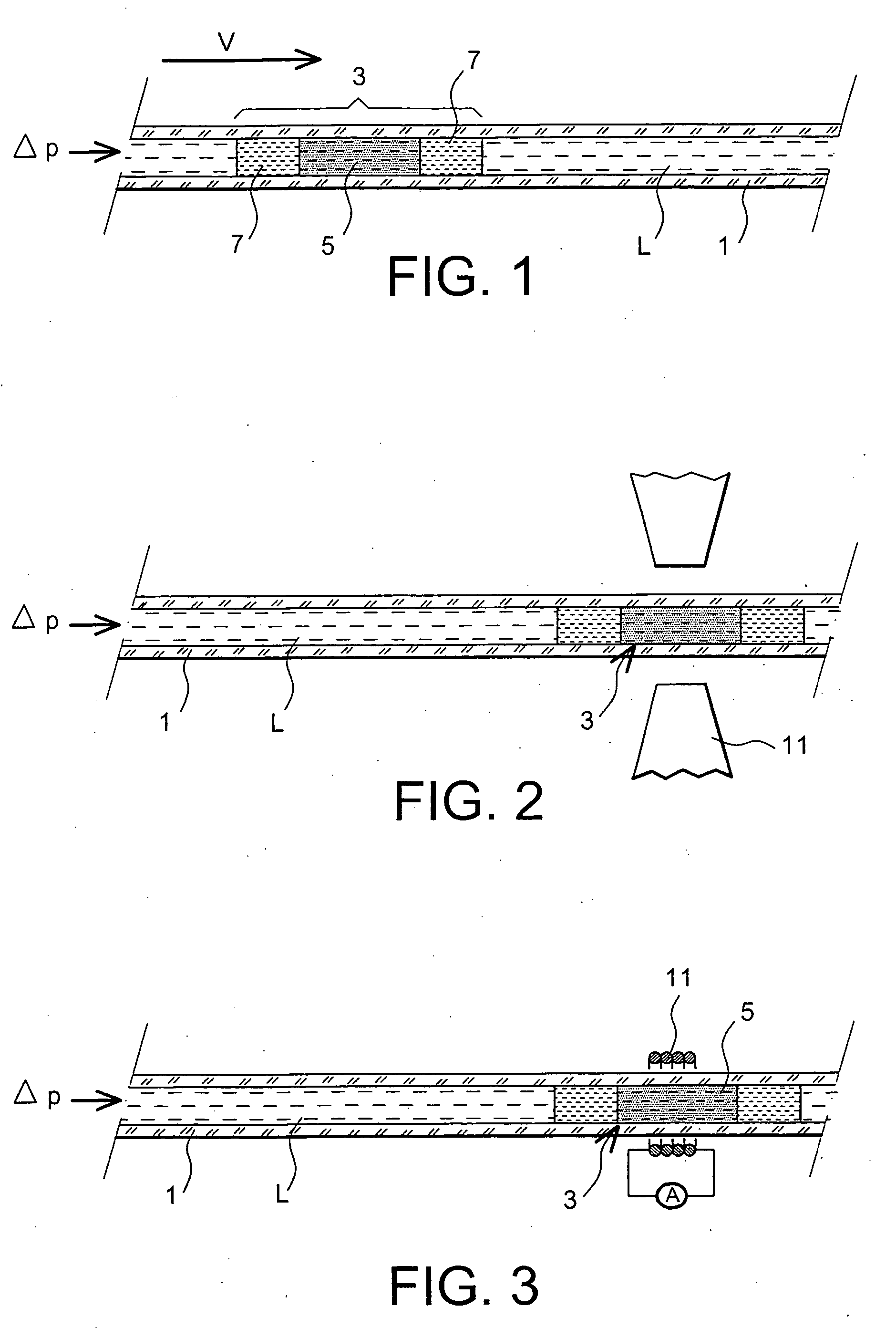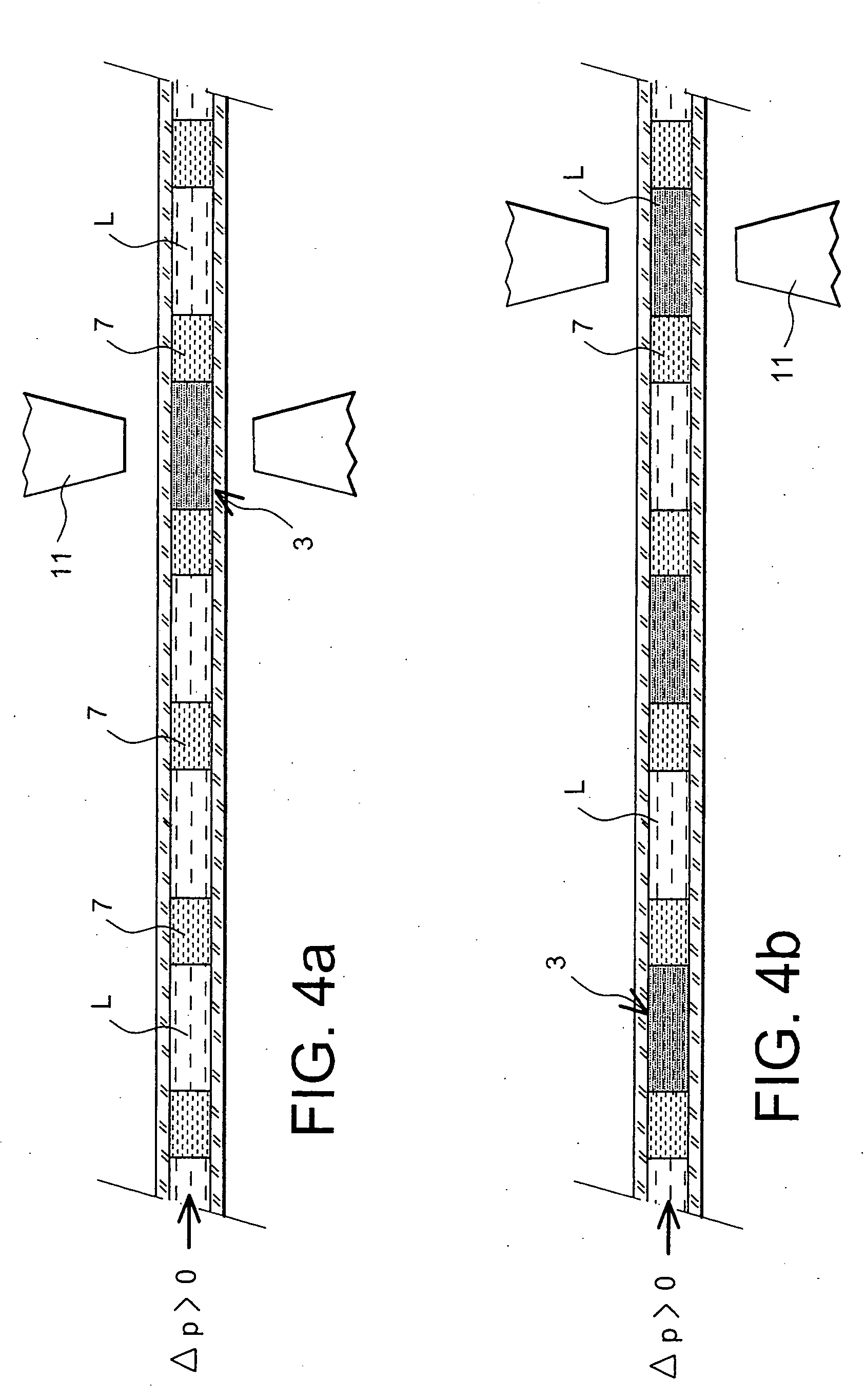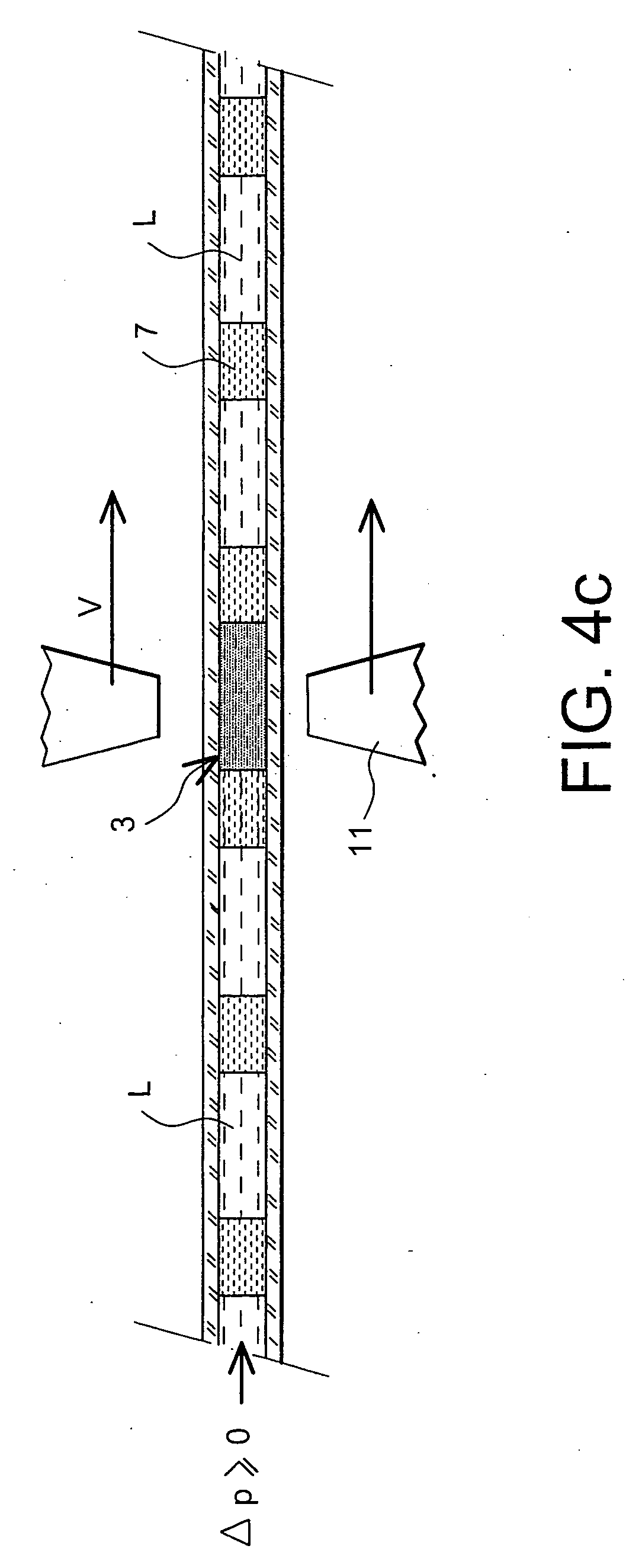Method for moving a fluid of interest in a capillary tube and fluidic microsystem
a fluid and microsystem technology, applied in the field of capillary tubes and fluid microsystems, can solve the problems of imposing certain constraints on the physicochemical properties, the precision of these systems, and the addition of the problem of biological contamination of one slug by another
- Summary
- Abstract
- Description
- Claims
- Application Information
AI Technical Summary
Benefits of technology
Problems solved by technology
Method used
Image
Examples
first embodiment
[0033] According to the present invention, the ferrofluid train may be composed of one ferrofluid slug and one slug of liquid immiscible with both the ferrofluid and the analyte fluid. This embodiment is, for example, useful for displacing an analyte fluid placed on one side of the ferrofluid train only, that is on the side of the immiscible liquid.
second embodiment
[0034] According to the present invention, a slug of liquid immiscible with both the ferrofluid and the analyte fluid is placed at each of the two ends of the ferrofluid slug. Thus, in this embodiment, the ferrofluid train comprises one ferrofluid slug and two slugs of liquid immiscible with both the ferrofluid and the analyte fluid. This embodiment is, for example, useful for displacing an analyte fluid placed on either side of the ferrofluid train, or for two different analyte fluids separated by the ferrofluid train.
third embodiment
[0035] According to the present invention, a plurality of ferrofluid trains can be introduced into the capillary channel with either identical ferrofluids or ferrofluids that differ from one train to another, and with slugs of liquid immiscible with both the ferrofluid and the analyte fluid being either identical or different in a given train or from one train to another. This embodiment is, for example, useful for displacing several slugs of one or more identical or different analyte fluids, each slug of analyte fluid being separated from the next either by a ferrofluid train according to the present invention or by a single slug of liquid immiscible with both the ferrofluid and the analyte fluid.
[0036] Further embodiments of the present invention will be apparent to those skilled in the art.
[0037] According to the invention, the magnet system required for displacing the analyte fluid through the capillary channel, in other words for driving the flow of this fluid, may be formed by...
PUM
| Property | Measurement | Unit |
|---|---|---|
| diameter | aaaaa | aaaaa |
| fluid displacement velocities | aaaaa | aaaaa |
| thickness | aaaaa | aaaaa |
Abstract
Description
Claims
Application Information
 Login to View More
Login to View More - R&D
- Intellectual Property
- Life Sciences
- Materials
- Tech Scout
- Unparalleled Data Quality
- Higher Quality Content
- 60% Fewer Hallucinations
Browse by: Latest US Patents, China's latest patents, Technical Efficacy Thesaurus, Application Domain, Technology Topic, Popular Technical Reports.
© 2025 PatSnap. All rights reserved.Legal|Privacy policy|Modern Slavery Act Transparency Statement|Sitemap|About US| Contact US: help@patsnap.com



